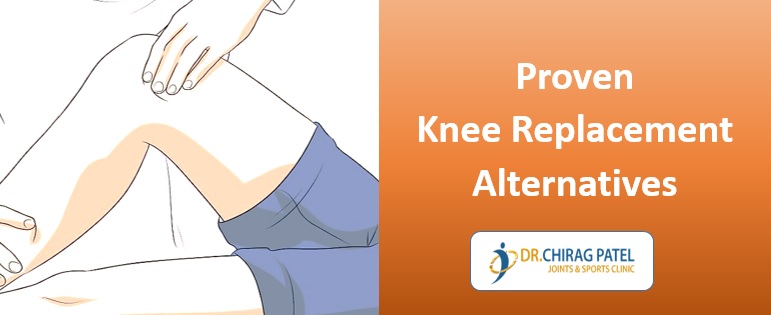Most doctors recommend non-surgical (conservative) treatments before considering a knee replacement. These include:
- Weight loss and diet control : Losing weight will reduce the strain on your knee.
- Physiotherapy or Knee strengthening exercise : Even though this may be difficult because of the pain, there’s usually some form of non-impact exercise (for example swimming or cycling) that you can start gently and which will improve the strength and flexibility of your knee.
- Medicines/tables – Painkillers can reduce the pain in your joint, while non-steroidal anti-inflammatory medicines may help if your knee is swollen.
- Intra-articular injections – These include injecting corticosteroids directly into your knee joint and/or hyaluronic acid injections, gel like preparation which helps lubricate the arthritic surface of the knee joint.
Generally, these don’t provide such good results as a new knee joint but they may allow you to delay having a knee replacement operation for some years. If you’ve tried these options, you may want to think about the surgical alternatives to knee replacement:
a) Arthroscopic washout and debridement
Keyhole surgery techniques (arthroscopy) to smooth damaged cartilage and remove debris from the knee joint can only be used in very specific circumstances. If there are mechanical symptoms such as ‘locking’ of the knee, then removing loose fragments of bone and cartilage may avoid having to have a knee replacement at that stage. There’s no evidence that it’s of benefit for arthritis generally.
b) Micro fracture
This operation, which is performed by keyhole machinery, involves making holes in exposed bone surfaces with a drill or pick. This encourages new cartilage to grow from the bone marrow. The technique is not recommended for advanced arthritis.
c) Osteotomy
This is an operation which may help younger patients. It involves cutting the shin bone crosswise, creating a wedge to shift the load away from the area affected by arthritis. Osteotomy may be considered as a way of putting off a knee replacement operation. However, it can make it more difficult to carry out a successful total knee replacement later on – especially if during the osteotomy the surgeon has to cut through the medial collateral ligament at the inner surface of the knee. Rarely, if the outer part of the knee is affected by arthritis, this operation is performed on the end of the thigh bone to shift load inwards.
d) Autologous chondrocyte therapy (ACT)
If only the hard cartilage is damaged, new cartilage can be grown in a test tube from your own cells. The new cartilage is then applied to the damaged area. This technique is mainly designed to repair small areas of cartilage damage resulting from accidental injury to the knee joint. It isn’t yet proven for arthritis and would only be suitable for younger patients whose cartilage cells are more active.





